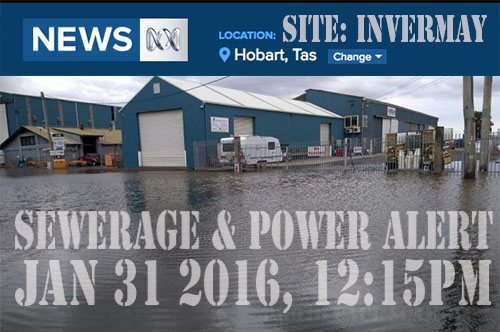FOREWORD
Dr Jillian Koshin has responded to the Conference
Paper below – "COMING READY OR NOT!" – and three
further questions. Dr Koshin is a researcher who lives in Invermay/Invertesk and consequently she has an interest in the community in which she lives and a working knowledge of current
community perceptions and attitudes.
For whatever reason Launceston Council while serving the community well enough in a crisis, very well in fact, curiously Council seem largely oblivious to 'local' community perceptions, understandings and sensitivities.
Abstract Launceston is a flood prone municipality. The last major flood occurred in 1929. In this flood, approximately 4000 people were made homeless overnight. Three similarly large floods occurred between 1852 and 1893. If a similar flood to the 1929 flood occurred today, it may affect around 640 homes in the flood area. However, all of the low-lying suburbs of Invermay/Inveresk could remain inaccessible with service interruptions that might prevent occupation of homes. Major roads would also be closed. This means that somewhere around 3000 residents and 270 commercial properties would be affected.
In addition, it is envisaged that a flood of this magnitude would cause significant damage to infrastructure of state significance such as Aurora Sports Stadium, the Queen Victoria Museum and Art Gallery, and the University of Tasmania’s Inveresk Campus. Such damage would incur significant financial loss and require both immediate and long term economic recovery. The state of the flood levee protection has received considerable Council (and media) attention, with Council attempting to secure state and federal funding to upgrade the levee system.
It is estimated that without flood levee protection, 40% of Invermay/Inveresk could be under water during high tide every day. The water could be over 1 metre deep at some locations. This could continue twice a day until any breaches in the levee banks are fixed and flood waters are pumped back into the river. Recent engineering advice indicates that in the event of a ‘modest flood’, there could be significant damage to property and interference to land use, commercial activity, employment and people’s lives for an extended period.
Despite the fact that this is a high profile issue in the Launceston community, there is little knowledge about the perceptions and beliefs of the residents most likely to be affected in the event of a major flood.
In addition, it is envisaged that a flood of this magnitude would cause significant damage to infrastructure of state significance such as Aurora Sports Stadium, the Queen Victoria Museum and Art Gallery, and the University of Tasmania’s Inveresk Campus. Such damage would incur significant financial loss and require both immediate and long term economic recovery. The state of the flood levee protection has received considerable Council (and media) attention, with Council attempting to secure state and federal funding to upgrade the levee system.
It is estimated that without flood levee protection, 40% of Invermay/Inveresk could be under water during high tide every day. The water could be over 1 metre deep at some locations. This could continue twice a day until any breaches in the levee banks are fixed and flood waters are pumped back into the river. Recent engineering advice indicates that in the event of a ‘modest flood’, there could be significant damage to property and interference to land use, commercial activity, employment and people’s lives for an extended period.
Despite the fact that this is a high profile issue in the Launceston community, there is little knowledge about the perceptions and beliefs of the residents most likely to be affected in the event of a major flood.
This paper reports on a research collaboration between the Launceston City Council and the University of Tasmania aimed at finding out more about community flood risk perceptions. Taking a sociological approach to risk perception, the project aims to examine in detail the demographic composition of the affected area, and a study of residents’ perception of, and readiness for, a major flood event. It is intended that the information gained from this study will assist the Launceston City Council to develop effective risk communication strategies, and to develop appropriate policies for emergency management should a major flood event occur.
 |
| Dr. Koshin's 2016 response to this paper "Coming ready or not!" ... CLICK HERE |


No comments:
Post a Comment